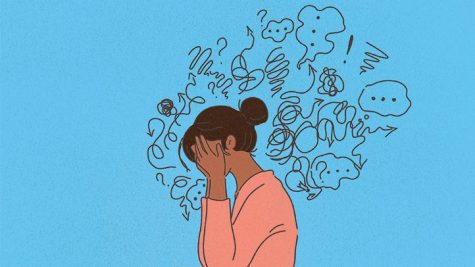The Glamorization of Depression
By Kelly Christ
Depression is one of the most widespread mental illnesses across the globe. Also known as major depressive disorder, depression “causes feelings of sadness and/or a loss of interest in activities once enjoyed,” as outlined by the American Psychological Association.
The disorder can have drastic consequences, often affecting one’s physical health and ability to function in society. With suicidal thoughts among the major symptoms of depression, it can be incredibly dangerous if left untreated.
Due to its prevalence, depression is often featured in media. From songs to movies, there is no shortage of references to depression. The way in which the subject is handled is incredibly vital to the understanding of the illness in the eyes of the public.
For decades, those struggling with mental illness, especially depression, have been dismissed. “It’s all in your head,” patients have been told countless times. Unfortunately, depression is frequently misrepresented in the media, reinforcing these harmful stereotypes and attitudes.
As I touched upon in my first article for this column, mental illness is often difficult for writers to portray. In cinema, several films that are widely considered to be among the greatest of all time include depictions of depression. These films, such as “Silver Linings Playbook” (2012), “It’s a Wonderful Life” (1946) and “Girl, Interrupted” (1999) portray depression accurately for the most part.
However, there is a troubling trend that has emerged, especially in recent decades, in which depression is glamorized or dramatized to be used as a plot device. Using “glamorization” and “mental illness” in the same sentence may seem unlikely, but the combination is part of a disturbing obsession in popular culture today. Mental illness is often seen as largely beneficial, sometimes romantic or even ideal.
In more direct terms, it is a simplification of the struggles that mental illness entails. As one article from The Guardian points out, this perception is often limited to a specific group of mental illnesses, which are seen as the “cool kind” or the “artsy kind.”
Social media best highlights this trend. Instagram and Tumblr, populated in large numbers by impressionable adolescents, are filled with song lyrics and images that portray mental disorders, such as depression or eating disorders, in a romantic light. This may include glamour shots of anorexic models, disturbingly noted as “thinspiration,” or photos depicting gorgeous actors with quotes referencing depression or suicide.
Much of the media targeted at young adults suffers from this glamorization. “Twilight,” the massively successful movie franchise, heavily features depression. Edward Cullen, the love interest to protagonist Bella, is romanticized for characteristics that reflect depression. Edward is “defined by his unhappiness,” as one article describes it. Bella has thoughts of suicide after Edward breaks up with her.
These depictions simplify the severity of mental illnesses like depression. Teenagers viewing these films will not understand the dangers of mental illness. Depression is not cured by a romantic reconciliation, nor does it make someone more attractive. The ability to overcome the obstacles that mental illness throws in one’s path should be celebrated, not the illnesses themselves.
The music industry is at fault as well. Singer Lana Del Rey faced backlash after a 2014 article in The Guardian quoted her saying, “I wish I was dead already.” She discusses death and mental illness frequently in many of her songs, such as “Cruel World,” “Dark Paradise” and (perhaps most flagrantly) “Born to Die.” Lana is not alone, though, as there are countless artists who highlight such dark themes in a glamorized manner.
Another criticism that spawned from her interview was Lana’s note of the early deaths — by suicide and alcohol poisoning respectively — of musicians Kurt Cobain and Amy Winehouse. The two are members of the so-called “27 Club,” which consists of popular celebrities who died at the age of 27. The obsession with early deaths is incredibly frightening, especially when considering the young audience of these artists.
There is an important distinction to make regarding the glamorization of mental health. It is not that these representations encourage suicide or mental illness in general, but instead that they “perpetuate the norms that discourage seeking help and prioritizing mental health,” as one article by The Daily Dot about mental health depictions in music points out.
Individuals battling mental illness face so many challenges as it stands. Promoting misunderstanding or minimizing the severity of their struggles are the last things needed. Accurate portrayals are certainly possible and they can have a substantial impact on the awareness of mental illness.
The media often neglects to depict healthy solutions. Instead, it romanticizes the struggle, showing only the beauty in the pain without acknowledging the danger it indicates.














































































































































































































Danny Holden • Apr 3, 2019 at 9:43 am
Depression is a natural by-product of love. The pain of heartbreak and the depths we fall are in direct correlation to the size of the mountain of love that you just seen crumble. And we break the hardest when love is either lost or betrayed and redemption is unobtainable , and it never helps to ponder what could have been. But then you suffer and cry through the four seasons of the year , and with the promise of spring you eagerly fall in love again